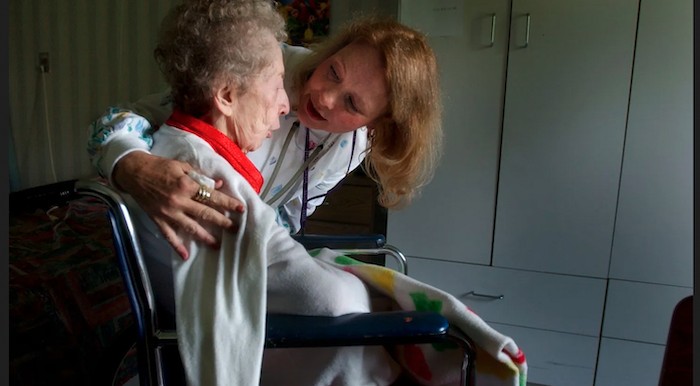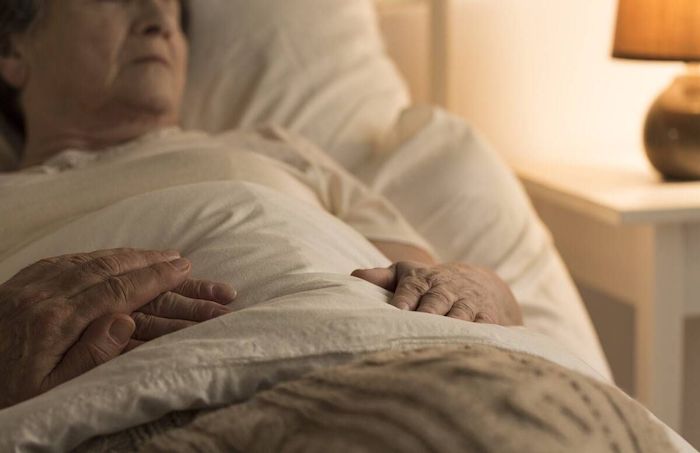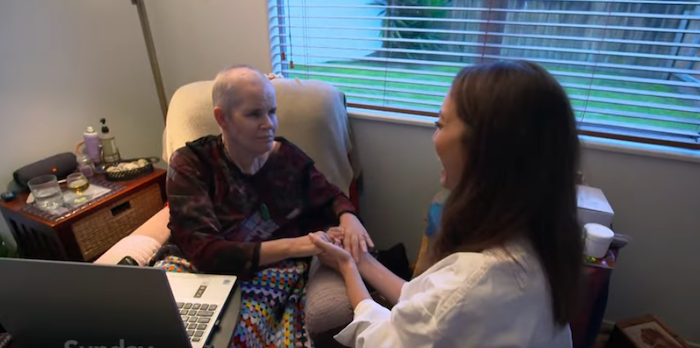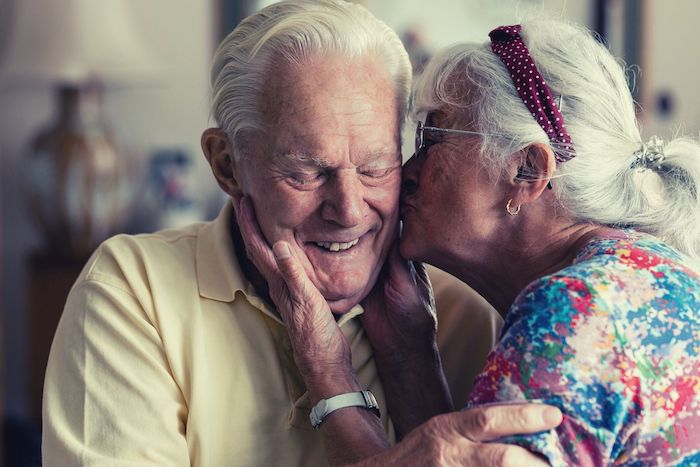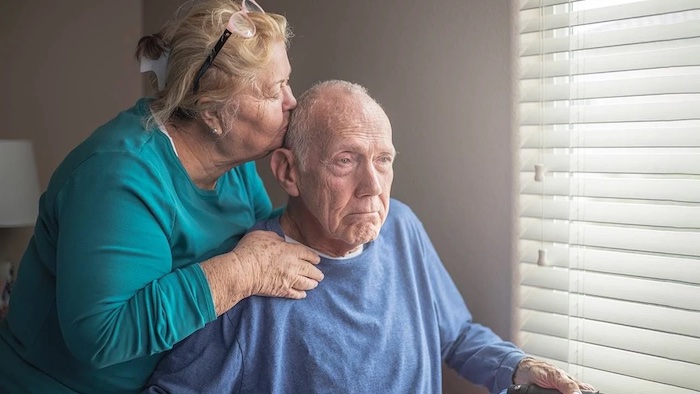Lisa Vigil Schattinger, MSN, RN, discusses her experience with medical aid in dying, and what oncology nurses need to understand when supporting patients at the end of their lives.

For patients with cancer who are at the end of their life, being afforded the same level of autonomy in death as they experienced is life can be a vital component in providing quality care for the patient and their family, according to Lisa Vigil Schattinger, MSN, RN.
Schattinger is the founder and Executive Director of Ohio End of Life Options, a nonprofit organization that advocates for and provides education on medical aid in dying laws. In addition to being a nurse advocate, she also brings a unique personal perspective to her career.
Schattinger’s stepfather electively chose medical assistance in end-of-life care under Oregon’s Death with Dignity Act1 after he received a myelodysplastic syndrome diagnosis and learned he was not eligible for blood marrow transplant. He opted not to start chemotherapy but enrolled in hospice and received palliative packed red blood cell transfusions before electing to pursue a medically assisted death.
Her stepfather’s death was incredibly peaceful and in accordance with his wishes: he was able to walk himself into his room, sit down on the bed, and be surrounded by family as he took the medication.
“He felt empowered,” she recalled, noting that the family was grateful that the state of Oregon had allowed them this option.
At that moment, Schattinger and her mother, who is also a nurse, recognized that this option is potentially groundbreaking for certain patients and their families. As a result, they decided to learn more about the processes in place and to share their own personal experiences. Recently, the duo presented on the topic at the 47th Annual Oncology Nursing Society Congress , specifically on the role of oncology nurses in end-of-life care and the key components of medical aid in dying (MAiD) or dying with dignity laws.
In an interview with Oncology Nursing News®, Schattinger provides a quick overview of her presentation and key takeaways for nurses seeking to provide quality care.
Oncology Nursing News®: Please provide a brief overview of medical aid in dying.
Schattinger: Medical aid in dying is a law that allows terminally ill and mentally capable adults the ability to request a prescription that will hasten their imminent death. The process is patient directed; it is a voluntary process that has multiple safeguards. It is for an [individual] who understands that they are at the end of their life, understands that they are dying, and wants to determine the time and the place and [the company present] at the end of their lives.
Each state can determine if they are going to pursue the process of passing an aid [with the establishment of a] dying law or medical aid in dying law. The first one that [was passed] was in Oregon, and it is called the Death with Dignity Act. I always consider that one as kind of a baseline. As other states passed [similar] laws, they put their “thumbprint” on that law— they made it work for their state.
Currently it is legal in Oregon, Washington, California, Hawaii, Colorado, New Mexico, Vermont, Washington, DC, New Jersey, and Maine. [In addition], there was a Montana State Supreme Court decision that allows [MAiD], but it is not exactly the same as in places that have actual laws.
[To qualify], patients have to be capable of making decisions. If there is any concern that the person is not capable of making decisions, then they can be referred for a mental health evaluation. Then there are timeframes in place [these vary by state, as well]. A patient also needs a written request that is witnessed by 2 people, of whom at least 1 cannot be related to or benefit in any way from the person’s death. Then, after qualifying for the prescription, they must wait 48 hours before filling. Patients must also be able to self-administer the medication.
Anybody involved in this process can opt out at any time, physicians, pharmacists, nurses, [or] any other care provider can opt not to participate [in the process]. Of course, the patient themselves can change their mind at any time and stop the process as well.
It is also important to note that when a physician gets this request, they must inform the person of all [available end-of-life options], including hospice care.
[Interestingly] we have learned that [approximately] a third of the [individuals] who get this prescription never end up taking it. There are a combination of things going on there. [Some] say that they can relax knowing that they are able to determine if [and when] their suffering becomes too great. Others, [unfortunately,] do decline in health. And [those] who are not able to self-administer, are no longer capable of making that decision.
Should oncology nurses only be familiar with these laws if they live in a state where it is legal? How might nurses support a patient who wants MAiD, yet lives in a state where it is not an option?
The American Nurses Association put out a statement saying that because so many people now have access to this option at the end-of-life that they feel nurses are ethically bound to be knowledgeable about it. This means being able to have non-judgmental conversations about MAiD, and to be able to [inform individuals] about what end of life options are available [including hospice care and pain management].
So if, as a nurse, you live in a state without a [MAiD] law, and someone asks you about it, [best practice] is taking a moment to really focus on that person and that request and ask: What does this mean to you? What does that request mean to you? Do you understand what all your options are for care at the end of life, and that we live in a state that does not have a law?
Then, if [end-of-life medical assistance] is important enough to patient, they [might consider if they’re willing] to move to a state with a law? This is a very big question. At the end of a person’s life, that is a really big step: to decide to pull out roots from their community, their community of support, and their healthcare community of support, and move to another area, to go through the process of establishing residency–depending on where you’re living—and finding 2 doctors who will participate in this program [is a big commitment].
However, some will decide that it is important enough to them and they do want to do that. But others [will not] and so everyone needs to understand what end-of-life care options are available to them. It is important to have that full conversation to understand that their personal beliefs, values, and goals are, and to see what types of care match their needs, as well as what is available in their community.
What are some misconceptions or things that nurses may not understand about MAiD that makes it difficult for them to support it?
A lot of times [individuals] do not understand [how it is] a self-directed process. This is the patient who wants this and it is vital that they determine what the end of their life looks like.
I remember a person who said, “When I got this diagnosis years ago, I knew that my treatment options would probably run out at some point. So, I became a partner with my health care team in making medical decisions moving through the course of my illness—I made decisions on what type of treatments [I took], what surgeries, and everything else that was possible.” When it came time for [the health care team] to say, there are no longer treatments for you, [the patient] said, “I made all of those decisions as a partner up to that point, why would it change?”
Please elaborate on the ethical value of medical aid and dying and the impact that it does have on the patient.
I think that concept of autonomy and self determination to some [individuals] is paramount. Its who they are. They want partners in their health care [team] who will work with them to provide that care. Some health care providers also believe that providing compassionate care is one that meets the [patient’s] goals.
Ultimately, the concept of suffering is for the patient to determine, not for us to judge.
Until we get to know these [individuals] and fully [understand] why they are making these requests [we cannot fully understand their needs]. Whatever a patient’s definition of suffering is, compassionate care means granting their requests to manage it.
Complete Article ↪HERE↩!

